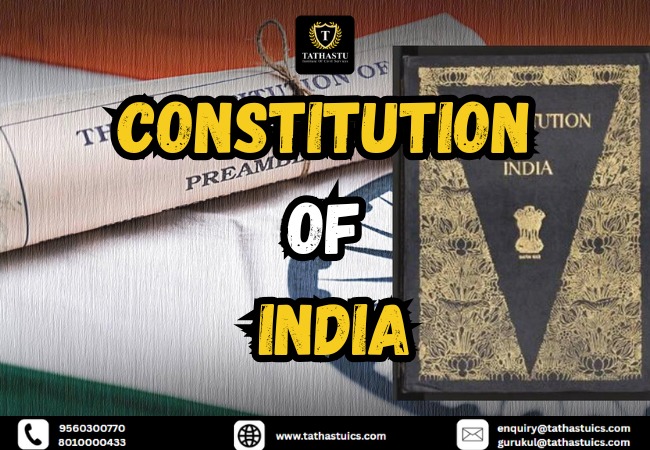What is meaning of Constitution?
- The Constitution is the fundamental set of principles and laws that establish how a government operates.
- The Constitution defines the structure of the government, the rights of the people, and the powers and responsibilities of different branches of the government.
- It serves as the supreme law of a nation or state, guiding legal and political decisions.
Sources of Constitution of India
The sources of Constitution of India are as follows:
1. Government of India Act of 1935
- Federal Scheme– Division of powers between the Centre and the States.
- Office of the Governor– Role and powers of the Governor as the head of state.
- Judiciary– Structure of courts – provisions for the Supreme Court and High Courts.
- Public Service Commissions– Establishing commissions such as the UPSC and State PSCs.
- Emergency Provisions– Framework for handling extraordinary situations in the country.
- Administrative Details– The basic administrative structure and governance mechanisms.
2. British Constitution
- Parliamentary System of Government– Close relationship between the executive and legislature organs of the government.
- Rule of Law– No individual is above the law.
- Legislative Procedure– Procedure for enacting laws.
- Single Citizenship– India provides single citizenship to all citizens.
- Cabinet System– Role of Prime Minister and the Council of Ministers.
- Prerogative Writs- Citizens receive protections for their Fundamental Rights and acquire specified privileges.
- Parliamentary Privileges- They represent the distinct advantages which both Members of Parliament receive through their membership of Lok Sabha and Rajya Sabha.
- Bicameral System- A bicameral system applies to governments when their legislative body contains two chambers, so in India, it has Lok Sabha as well as the Rajya Sabha.
3. U.S. Constitution
- Fundamental Rights– Fundamental rights that safeguard the personal liberties of the citizens.
- Independence of the Judiciary– The judicial system operates independently from both legislative and executive branches.
- Judicial Review– The power of courts to review the laws made by the legislature.
- Impeachment of the President– The President may face impeachment to remove them from their position.
- Removal of Supreme Court and High Court Judges– The process that allows judges on both the Supreme Court and High Court to be removed from their positions.
- Post of the Vice-President– The role and responsibilities of the Vice-President.
4. Irish Constitution
- Directive Principles of State Policy (DPSP) – The Directive Principles of State Policy (DPSPs) serve as fundamental guidelines for national governance to establish socio-economic justice through equality among citizens of the country.
- Nominations of Members to Rajya Sabha – The provisions of nomination of members in the Rajya Sabha.
- Methods of Election of the President – The system for electing the Indian President through an electoral college.
5. Canadian Constitution
- Federation with a Strong Centre– India follows a federal system where the Centre has overriding powers.
- Residuary Powers with the Centre– Unspecified powers that remain with the central government.
- Appointment of State Governors by the Centre– Role of Governors as representatives of the Union Government in States.
- Advisory Jurisdiction of the Supreme Court– The Supreme Court provides legal advice to the Indian President.
6. Australian Constitution
- Concurrent List– The division of subjects between the Centre and States where both can legislate.
- Freedom of Trade, Commerce & Intercourse– It promotes economic unity between states.
- Joint Sitting of Parliament- A method of breaking any deadlock that may occur between the two Houses of Parliament, i.e. Lok Sabha and Rajya Sabha.
7. Weimar Constitution of Germany
- Suspension of Fundamental Rights during Emergency– Allows suspension of rights in times of national crisis.
8. Soviet Constitution (USSR, now Russia)
- Fundamental Duties– Responsibilities of citizens towards the nation.
- Ideal of Justice (Social, Economic, and Political) in the Preamble– Commitment to an equitable society.
9. French Constitution
- Republic– According to the Preamble of the Indian Constitution, India is a sovereign, democratic, republic.
- Liberty, Equality, and Fraternity– These are the principles that are enshrined in the Preamble of the Indian Constitution.
10. South African Constitution
- Procedure for Amendment of the Constitution– The process used to change the Constitution is called the Procedure for Amendment of the Constitution.
- Election of Members to Rajya Sabha– Member positions within Rajya Sabha are filled through indirect voting by State Legislative Assemblies.

